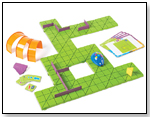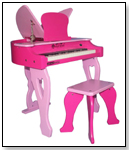|
|
4 Common Patenting Mistakes and How to Avoid Them Attention to Detail can Make or Break your Patent ClaimAs is commonly known, patent rights confer a limited monopoly. It affords the patent holder the exclusive right to make, use, sell or offer for sale any patented toy for a period of 20 years from the earliest filing date of the patent. 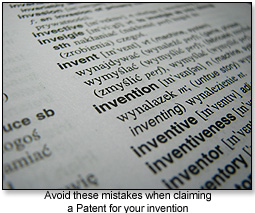 The third party patent holder P will have far greater negotiation ability than L. This is because the patent holder P will be able to guarantee exclusivity to the toy manufacturer M, whereas the non-patented toy licensor L will not. When time, effort, and finances are necessary to introduce a new toy to market, a well-prepared patent application will help ward away trespassers and copycats. In contrast, a poorly crafted patent application potentially does more harm than a situation where no patent application is filed. Common mistakes committed early in the patent process make successful patenting extremely difficult, if not impossible. The most common and most costly mistakes of the uninformed patent filer include: 1) Insufficient searching of the prior artThis article will help guard against the above pitfalls in patent application preparation. Proper Searching: Patents are granted on novel and non-obvious inventions For those inventors of an evolutionary toy, judged to have staying power over several years, the first stop should be the USPTO website. Before even considering submitting a patent application, it is imperative to do a thorough search of the USPTO databases of both patented inventions and published patent applications. These are accessible and fully searchable at http://www.uspto.gov/patents/process/search/index.jsp. A keyword search should be the start to locate any prior filed inventions that appear close to the contemplated invention. Search for Similar, Not Just Identical, Inventions Review the Results of Relevant Keyword Searches Carefully As an example, if the contemplated invention is a remote controlled airplane including an on-plane sensor which inter-operates with the main operator controller, one should search for patents including each of the terms "remote," "control," "sensor," and "airplane." From such a search, it will be possible to obtain the classification number for this type of invention. Searching this classification number will lead to other patents and patent publications in the same area. Each of those documents should be reviewed for the inclusion of all of the contemplated invention concepts. If one does not find one document with all of the characteristics, that will be a good start on the road to patenting the contemplated invention. However, that should not be the end of the search. Search Multiple Categories for Similar Components 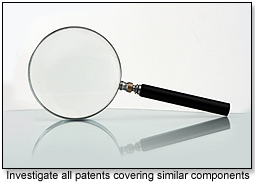 The Examiner will also search areas having interoperation of devices that address problems that may be similar to those faced when remotely-controlling an airplane. These may include sensors detecting obstacles in the toy's path or orientation of the toy, which return a signal back to the main controller for appropriate course correction. Understanding and Making Proper Use of Search Results to Formulate the Patent Disclosure Once thorough searches have been conducted, the next step is to describe the invention in both text and drawings, in such manner that the contemplated invention is clearly distinguishable for any of the search results. Returning to the example of the remote controlled airplane, let's assume that there is a prior patent (e.g. fictitious "USP 1234567") for a remote-controlled airplane with an on-plane sensor. Does this mean the end of the patenting process? Not necessarily. If the contemplated invention includes refinements to distinguish the contemplated invention from USP 1234567, then these refinements should form part of the patent disclosure of the contemplated invention. Such refinements may include the type of sensor of the contemplated invention such that it is different from USP 1234567, or interoperation of the sensor with the main-controller in a manner different than USP 1234567. Using Preliminary Research to Distinguish Between Inventions Here, the importance of the preliminary search becomes highlighted. If the patent applicant did not find USP 1234567 in the search, then it would be easy to draft a patent disclosure with only the basic requirements of the remote-controlled plane with the on-plane sensor, without including the refinements that would be necessary to distinguish the contemplated invention from USP 1234567. One must be able to express the difference between the contemplated invention and USP 1234567. A patent applicant must also be able to foresee how the Examiner may use other patented inventions (e.g. drawn from the action figure, boat or car inventions) and describe the invention over these different combinations of inventions. Without a sufficient disclosure to express the difference within the patent application at the time of filing the application, the Examiner may not issue the patent. Too often, an inventor will not adequately describe the invention in the original application. As a result, the inventor will lose the benefit of an early filing date, and later inventors who have refined the invention and described the invention to be distinguishable from USP 1234567 may garner better rights over the contemplated invention. Claiming What You Disclose From the above discussion, the take-away lesson should be to over-include descriptions of refinements of the invention rather than to under-include. However, as the refinements are added to the main body of the patent disclosure, they should also be included in the patent claims to the extent feasible. Patent claims are the numbered paragraphs that appear at the end of a patent document. These "claims" describe the actual rights that are granted to an inventor to protect the invention. The broader the claim, the more valuable the right. Make Patent Claim as Specific and Detailed as Possible A patent claim may start off very broad. Continuing with the remote-controlled airplane example, the originally filed claims may broadly include a remote controlled airplane with an on-plane gyroscope sensor. The detailed description of the invention (but not in the original claim) may include three types of gyroscope sensors A, B, and C. In the event the Examiner finds a prior patent (fictitious "USP 2345678") which teaches gyroscope sensor type C, and rejects the claim over USP 2345678, the Applicant may add features to the claim to limit the gyroscope sensor to type A and B, excluding C. Thus, the patent will issue protecting the remote controlled plane limited to gyroscope sensor types A and B. The plane with gyroscope sensor type C will be deemed to be "dedicated" to anyone to use freely without encumbrance of the patent. If, in this example, the contemplated invention used gyroscope sensor C in a manner different than that shown or suggested by USP 2345678, the patent Applicant needs to claim that alternative style of use to protect that part of the invention, i.e. to avoid "dedication" of the non-obvious use of gyroscope type C in the remote controlled airplane. Consult a Professional and Don’t Cut Corners 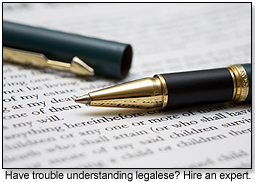 The inventor is in the best position to do the prior art search. However, once a rudimentary search is performed, it is advisable to seek help deciphering the search results and foresee possible ways in which the Examiner may reject the application. This way, any holes in the disclosure may be filled in before the application enters the examination process. This will also provide better structure for a smoother examination process.  Writer's Bio: Susan Perng Pan is partner in the Washington, D.C., office of the global intellectual property firm, Sughrue Mion PLLC. She litigates multi-party complex patent disputes before several U.S. federal district courts, the U.S. International Trade Commission, and the U.S. Federal Trade Commission. Her practice also includes preparing and prosecuting patent applications, appeals and interferences before the U.S. Patent and Trademark Office. She may be contacted at span (at) sughrue.com. Read more articles by this author Writer's Bio: Susan Perng Pan is partner in the Washington, D.C., office of the global intellectual property firm, Sughrue Mion PLLC. She litigates multi-party complex patent disputes before several U.S. federal district courts, the U.S. International Trade Commission, and the U.S. Federal Trade Commission. Her practice also includes preparing and prosecuting patent applications, appeals and interferences before the U.S. Patent and Trademark Office. She may be contacted at span (at) sughrue.com. Read more articles by this author |
| ||||||||||||||||||||||||||||||||
Disclaimer Privacy Policy Career Opportunities
Use of this site constitutes acceptance of our Terms of Use.
© Copyright 2025 PlayZak®, a division of ToyDirectory.com®, Inc.


